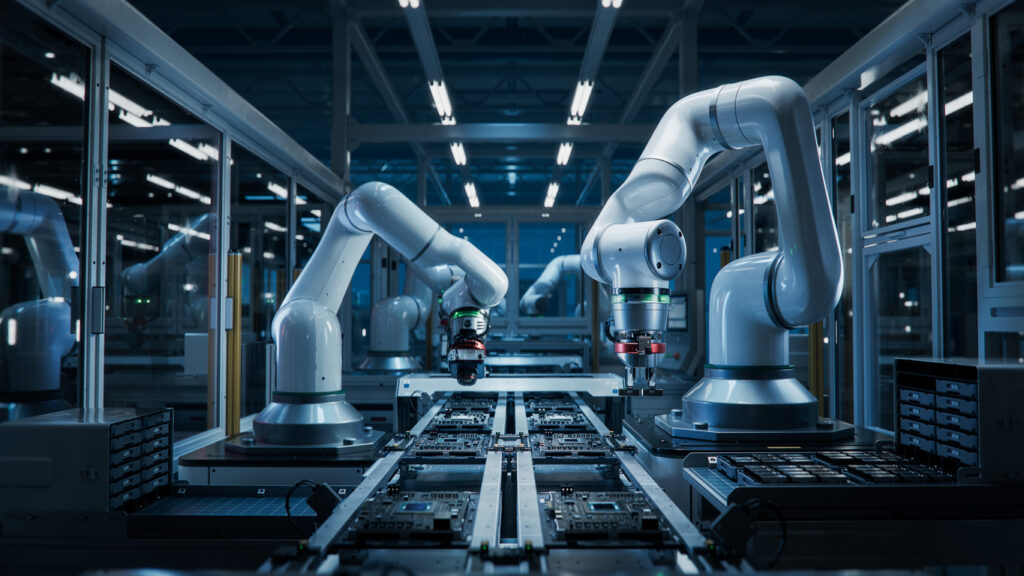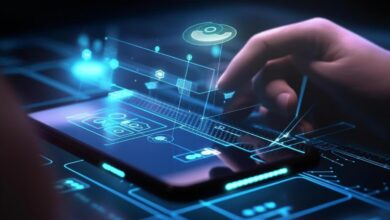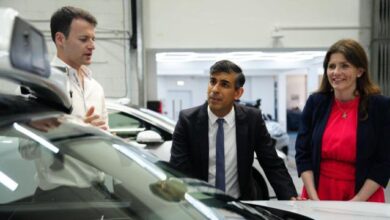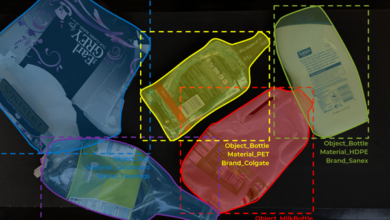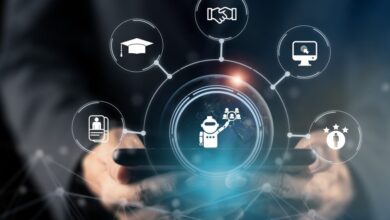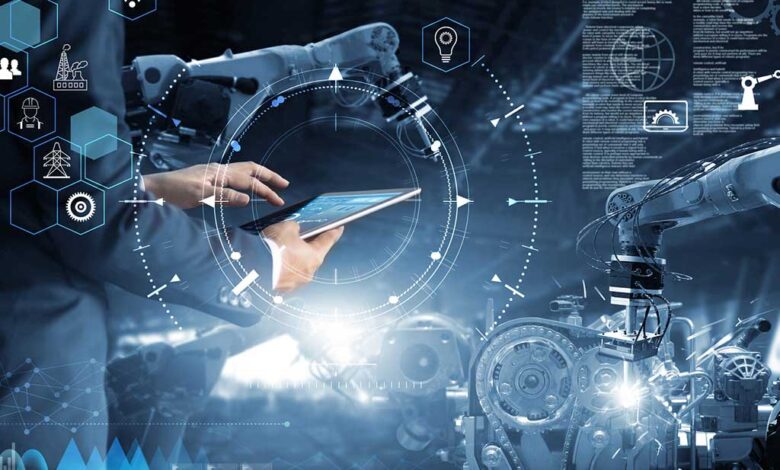
The inclusion of Artificial Intelligence (AI) in robotics is becoming increasingly common. This synergy goes beyond making robots more intelligent; it enables machines to perceive, learn, and act autonomously. In this article, we will explore the current trends and future prospects of AI in robotics, highlighting advancements, real-world applications, and potential challenges.

Current Trends in AI-Integrated Robotics
Machine Learning and Robotics
Data Science holds an important place in today’s robotics because it enables the robotic systems to learn from data, detect patterns and evolv from new scenarios with less human intervention. This ability is especially important in industries where robots are used in technological lines of production, quality assurance, and prognosis of when the production line may require some servicing. On the other hand, in such application domains as service and health care, where humans interact with robots, ML allows robots to get to know people’s needs, to get to know their preferences, and thus improve service provided and productivity. Additionally, advancements in robot voice generator technology have made it possible for robots to communicate with people in more natural, human-like ways, further enhancing interaction quality.
Deep Learning and Neural Networks
Deep learning is one of the subfields of machine learning that uses neural networks and can change the possibilities of robots. These networks, which are similar to the human brain, allow robots to analyze and understand a large amount of data, as people’s consciousness does. To those in computer vision, this enables robots to identify objects, comprehend the scene, and move within spaces with great precision. Integrated natural language processing (NLP) enables a robot to understand as well as generate human language thus enhancing natural interaction between a human being and a robot. Cooperating in the complex procedures or simply being friends, the robots based on the deep learning possibilities are in vogue.
Reinforcement Learning
Reinforcement learning is a strategy that enables robots to learn all by themselves. Due to the reinforcement learning, robots are capable to improve themselves in facing new obstacle and perform tasks with accuracy and self sufficient. Lastly, once with all that robots can then learn whatever comes new with in a twinkle of an eye, and perform actions corrected and without the errors that humans used to make.
Advanced Sensors and Computer Vision
Sophisticated sense organs and computer vision help the robots ‘see’ similar to how humans see things. Sophisticated sensors provide essential information to manage space, movement, and the constituents of the object; control a robot effectively. Computer vision to them can help identify the objects, analyse the visual information and make the right decision as per their observation.
Human-Robot Interaction
Computants such as robots have the ability to comprehend both spoken and written words as well as other forms of communication that convey emotions. This has made the robots to be more social and act accordingly in many fields, for instance, customer service robots who even engage in conversations with their customers or companion robots who offer social relations and assistance. There is a growing capability in AI to grasp feelings and emotions of sati and detect correlating feelings to human emotional states thereby creating the possibility of friendly robots with user availableness. This leads to the generation of the fundamentals of social interaction which in this case give the required natural mode of interaction.
Generative AI and Augmented Reality
Thus, generative AI, a branch of machine learning, already refines robot vision to make them more perceptive and reactive to the surrounding world and to be able to comprehend and predict various patterns in it. Likewise, augmented reality (AR), which acts as an additional layer of digital information on top of the real world also increase robots capability as they can analyze it. For example, service robots with incorporated AR are able to show prompt or instructions to help humans in different chores, simple as fabrication lines tasks, or challenging as medical surgeries.
Real-World Examples of Applications of AI-powered Robots
Industrial and Manufacturing Robots
The integration of AI in manufacturing significantly improves the efficiency and adaptability of production processes. In automotive manufacturing, for example, AI-powered robots adjust their actions in real-time for tasks like painting or assembly, ensuring high precision and minimizing waste. In electronics manufacturing, such robots deal with delicate components, adapting to variations in size or shape. The adaptability powered by AI translates to reduced downtime and fewer human errors.
Healthcare and Surgical Robots
Artificial intelligence has revolutionized surgical robots, and patient care in health care facilities. In surgeries, there are surgical robots that come with artificial intelligence to help in difficult surgeries. These identify data from the patient’s pre-op medical history to help surgeons during operations. Other than the surgical applications, AI gets applied in healthcare robotics in the context of patient monitoring among others. Implemented in healthcare facilities, intelligent robotic agents can constantly assess the state of their patients’ health, contribute toward the rehabilitation process, and simply be friends with the patients thereby making health care facilities better places to be for the patients.
Service Robots
In hospitality it means that robots operate with guests to share information, bring meals or help guests navigate the facility of the hotel. In retail, service robots inform their owners about products, help choose a section or product; or organize shelves. In customer service, it is the fast robotic interactions with the client through the use of robots controlled by artificial intelligence.
Challenges and Future Developments
As combined with the robotics the AI has some very promising outcomes, its use has some difficulties that should be solved to get most from it. The first of these is a decisive factor that directly relates to the availability of resources and their overpowered processing capacity. Deep learning algorithms as well as real time data analysis AI algorithms, which are the most common, demand vast computing power. This demand may exceed the capabilities of the present processors which are often implemented in many of today’s existing robotic systems, and thus will prove as a challenge to the realization of complex AI functionalities particularly in small and mobile robots. Also, while algorithms get complicated, finding ways of describing and implementing them to effectively interface with the physical environment through software-controlled robots gets harder. This complexity also affects issues such as debugging and maintaining of these systems and to ensure that the developed systems are capable of manoeuvring the real world uncertainties. Solving these technical issues is the key to further development of the AI Robotics and their integration into the industries.
Final Remarks
AI when implemented in robotics is changing the manners by which machines perfunctory, which in turn is changing the manner in which many fields function. From manufacturing and patient treatment in hospitals to efficient communication in customer relations, AI is revolutionalizing touchpoints. However, there is not a smooth ride to achieving these goals as the following points will illustrate. Besides, the challenges in computing safety and robustness in a real-world environment, high and complex computational algorithms and human robot interaction still persists.
Finally, it is suggested that AI has tremendous future prospects in robotics. This implies that machine learning, deep learning, computer visions, and other related technologies will probably advance to push for even the more robot autonomous, adaptive, and intelligent. The current problems might be solved with advancement in the technologies like quantum computing and other advanced AI algorithms.
Balla

